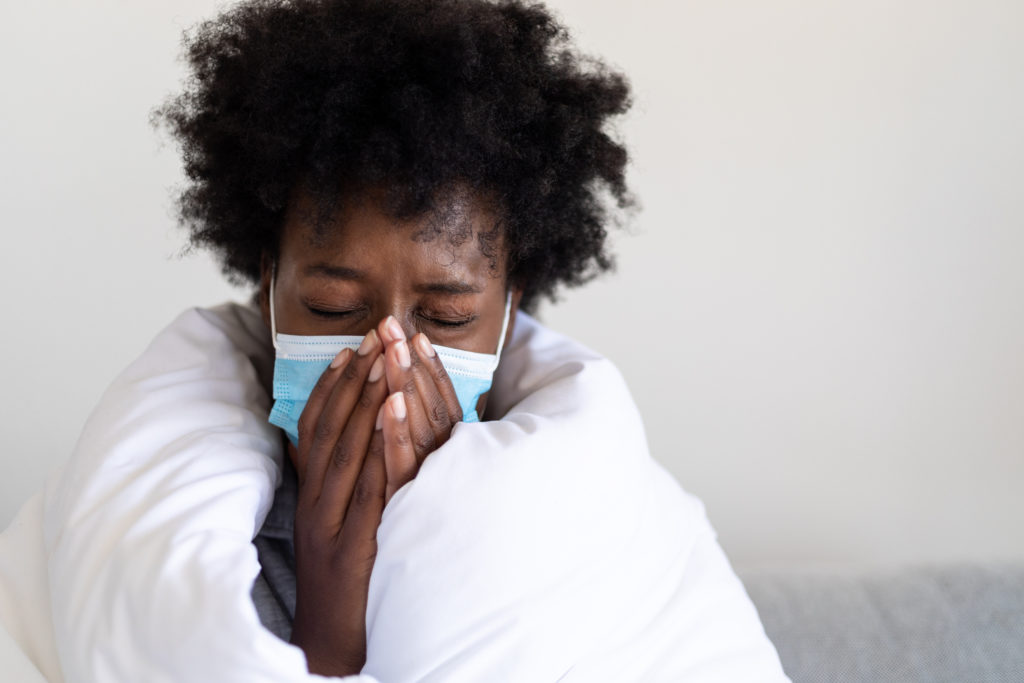
As if being in the coronavirus pandemic was enough, we are coming out of the allergy season, and into flu season. All of which have some of the same symptoms.
While it was initially thought that getting the flu and contracting the coronavirus COVID-19 were separate, now it appears you can get both infections at once.
Having this double whammy might wreak havoc on your immune system and increase the risk of more serious illnesses.
In addition to your personal health, medical facilities may get overwhelmed by people with both illnesses, potentially wreaking havoc on hospital capacity.
"Once you get infected with the flu and some other respiratory viruses, it weakens your body," said Yasmin, director of the Stanford Health Communication Initiative.
"Your defenses go down, and it makes you vulnerable to getting a second infection on top of that."
On their own, both Covid-19 and the flu can attack the lungs, potentially causing pneumonia, fluid in the lungs or respiratory failure, the Centers for Disease Control and Prevention said.
Each illness can also cause sepsis, cardiac injury and inflammation of the heart, brain or muscle tissues.
Because Covid-19 didn't spread across the US until near the end of the last flu season, it's too early to know exactly how much worse this "twin-demic" as some call it, could be, compared to having each virus on its own.
While getting the flu shot, may or may not prevent you from getting the flu, "the flu shot cannot defend you against coronavirus," says Dr. Sanjay Gupta of CNN.
Just 45 percent of adults in the United States got the flu shot last year, according to the Centers for Disease Control and Prevention, even though the seasonal version of the disease is deadly, killing an average of 37,000 people every year over the past decade.

How Can You Tell the Difference between the Flu and Coronavirus?
Both the flu and Covid-19 can give you a fever, cough, shortness of breath, fatigue, sore throat, body aches and a runny or stuffy nose, the CDC said.
Lisa Maragakis, senior director of infection prevention at Johns Hopkins University School of Medicine in Baltimore, Maryland says, that "the symptoms for flu and COVID-19 are so similar that one of the challenges we’re dealing with this year is diagnosing people correctly and quickly.
Even if you have mild symptoms, don’t attempt to ride out a virus on your own, and don't assume that coughing is the only clue you've got COVID-19.
You should contact your doctor if you have body aches, fever, a sore throat, or respiratory symptoms so you can be tested for COVID-19.
The list of warning signs for the coronavirus is continually expanding and now includes loss of taste or smell, nausea, diarrhea, or even swollen red toes."
It’s important to know which infection you have. With the flu, your doctor can prescribe an antiviral medication.
But if you have COVID-19, your doctor will help you decide if you need to go to the hospital for severe symptoms where you might be prescribed steroids or other experimental medications.
Plus, you’ll have to be quarantined to avoid transmitting it to others.
"Some people may have vomiting and diarrhea, though this is more common in children than adults," the CDC said.
But unlike the flu, Covid-19 can cause a loss of taste or smell.
And about half of coronavirus transmissions happen between people who don't show any symptoms. Many of those people are pre-symptomatic and are more contagious before they start showing symptoms.
So the best way to know if you have the novel coronavirus or the flu (or both) is to get tested.
The CDC has created a test that will check for both viruses, to be used at CDC-supported public health labs. The agency said it is continuing to manufacture and distribute these tests. Find your testing site here.






